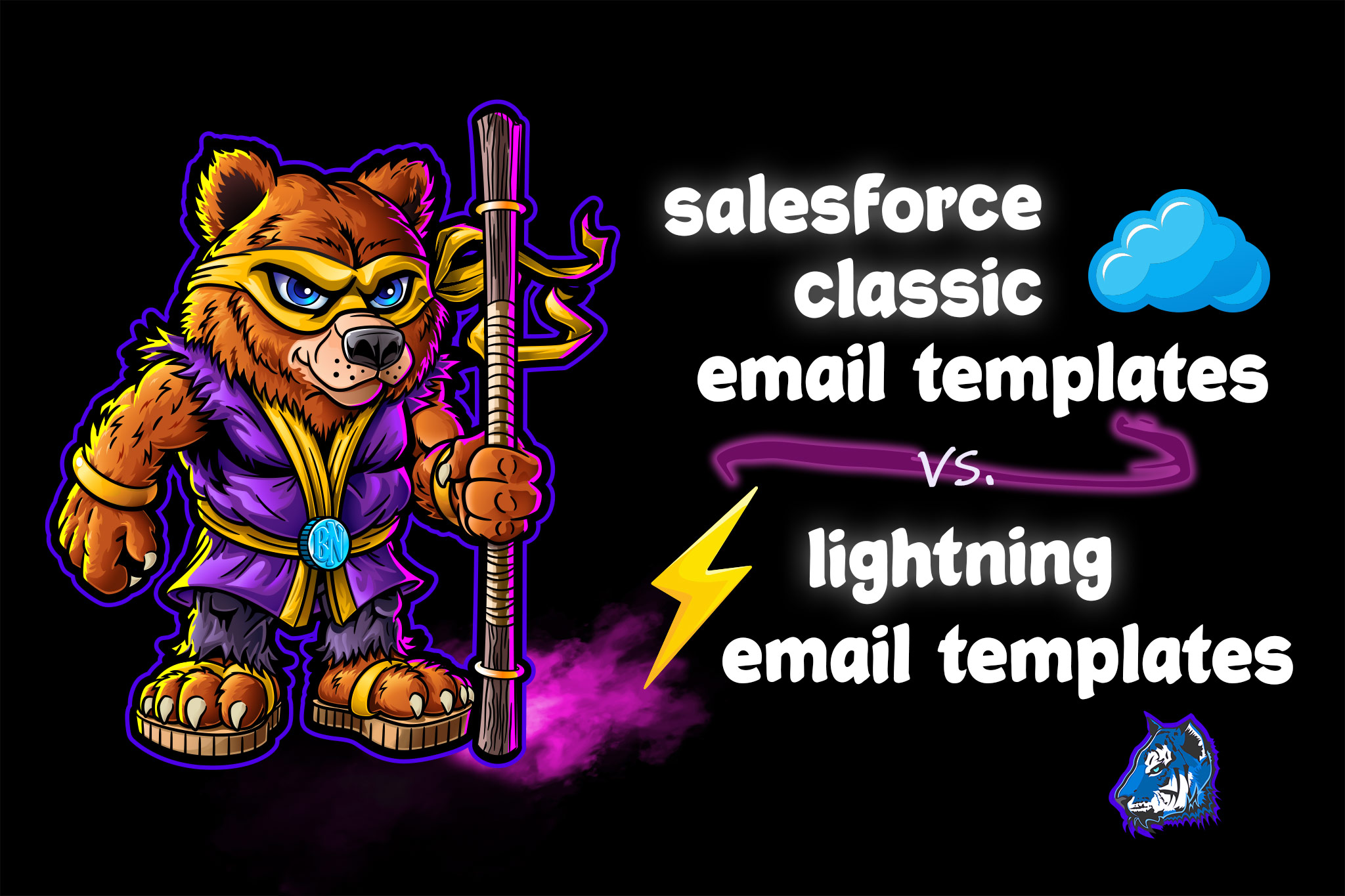Salesforce Classic vs. Lightning Email Templates
Ever wondered what the differences are between a Lightning Email template and a Classic email template? Or which one you should be using for certain scenarios? We did too.
Check out the video on how to create a classic email template and a lightning email template from scratch. We will show the features that we recommend you turn on for email tracking, email template folder creation and more! Learn the pros and cons for each type of template and when you should use each one.
Recommended Email Features to Enable
We recommend you enable the following features before your teams begin emailing through Salesforce.
- Enable HTML Email Tracking -> Setup -> Activity Settings -> Enable Email Tracking
- You can choose to omit your internal company IP addresses from tracking by adding your internal IPs.
- Enable Enhanced Email -> This features enables the Email Message object - all emails will be stored as Email Messages instead of Task records. This will impact your reporting if you do not
- To navigate to enhanced email in your dev org, append this on the end of the URL: ui/setup/email/EnhancedEmailSetupPage?retURL=%2Fui%2Fsetup%2FSetup%3Fsetupid%3DEmailExperience&setupid=EnhancedEmail
- Email Attachments Setting -> size limit is 25 MB - use the third radial button - Setup -> Email Attachments
- Organization-Wide Email Footers -> you can set one up for single emails and a different footer for mass/list emails.
- Go to Setup -> Email Footers
- Example of Type of Footers -Confidentiality Notice: This email and any files transmitted with it are confidential and intended solely for the use of the individual or entity to whom they are addressed. If you have received this email in error, please notify the sender immediately and delete this email from your system. Thank you.
- Then choose the default footer for each type of email.
How to Create a Classic Email Template
- If you are in an older developer org, you will need to navigate to your base URL + '00X' in classic.
- If you are in an enterprise org, you should be able to go to Setup -> Classic Email Templates
- Create a Folder -> Create New Folder
- Create a Classic Letterhead - I would recommend a blank one with no colors, logos or anything.
- Choose Template Type = HTML if you want to track the opens or add links and images to your emails.
- Add Field Merges for email signature and any other fields
- Send Test and Verify Merge Fields to test your email template
Classic Email Template Pros and Cons
- Pros -
- Can use in flows to send email to Leads and Contacts
- Can you merge fields from related standard objects. Ex: Account fields can be used on a Contact email template.
- Formulas work in email templates to show/hide information - but Salesforce support does not support them.
- Send Test and Verify Merge Fields feature is available for testing
- Cons -
- You have to create an email template for Contacts and one for Leads regardless of which field merges you are using. There are no 'recipient' fields.
- Emails are center justified when sent to the recipient
How to Create a Lightning Email Template
- Go to the App Launcher in Lightning -> Search for the Email Templates tab. If you do not see it, go to your profile and update the setting to Default Off or Default On for the Email Template tab
- Folders and Enhanced Sharing -> this feature is necessary if you want to create folders in the Lightning Email Template tab. Setup -> Lightning Email Templates
- Create new Template
- Use the recipient field merges if you want to create one email template for both leads and contacts BUT you cannot reference the Account fields if you choose this object. Show how the Related Entity Type shows you which object's fields you can choose from.
- Sender fields work but if you want to use the Owner field info in the email signature, you will need to create formula fields.
- Test sending email by going to contact record
- Open email from inbox and show how email looks - not center justified.
- Click on the Email Message record in Activity History and choose the Details tab to see more information about the email.
- Go to Setup -> Edit Object -> add the following fields to the Email Message record: First Opened, Last Opened
Lightning Email Template Pros and Cons
- Pros -
- Can use one template for both Leads and Contacts depending on which field merges you have in the template.
- Can see the HTML and modify the email template using the text or HTML code.
- Email is not center justified when sent to recipient
- Can use with List emails
- Cons -
- Send Test and Verify Merge Fields option is not available with Salesforce Lightning Email Templates.
- Cannot use Lightning Email templates when sending emails to Leads or Contacts in a flow. You will receive an error message saying the flow cannot resolve the recipient fields.
- Cannot reference related standard object fields in template
- Cannot figure out how to use formulas in Lightning email templates
For any questions, comments, concerns – let us know in the comment section below!
We would love to hear from you!
